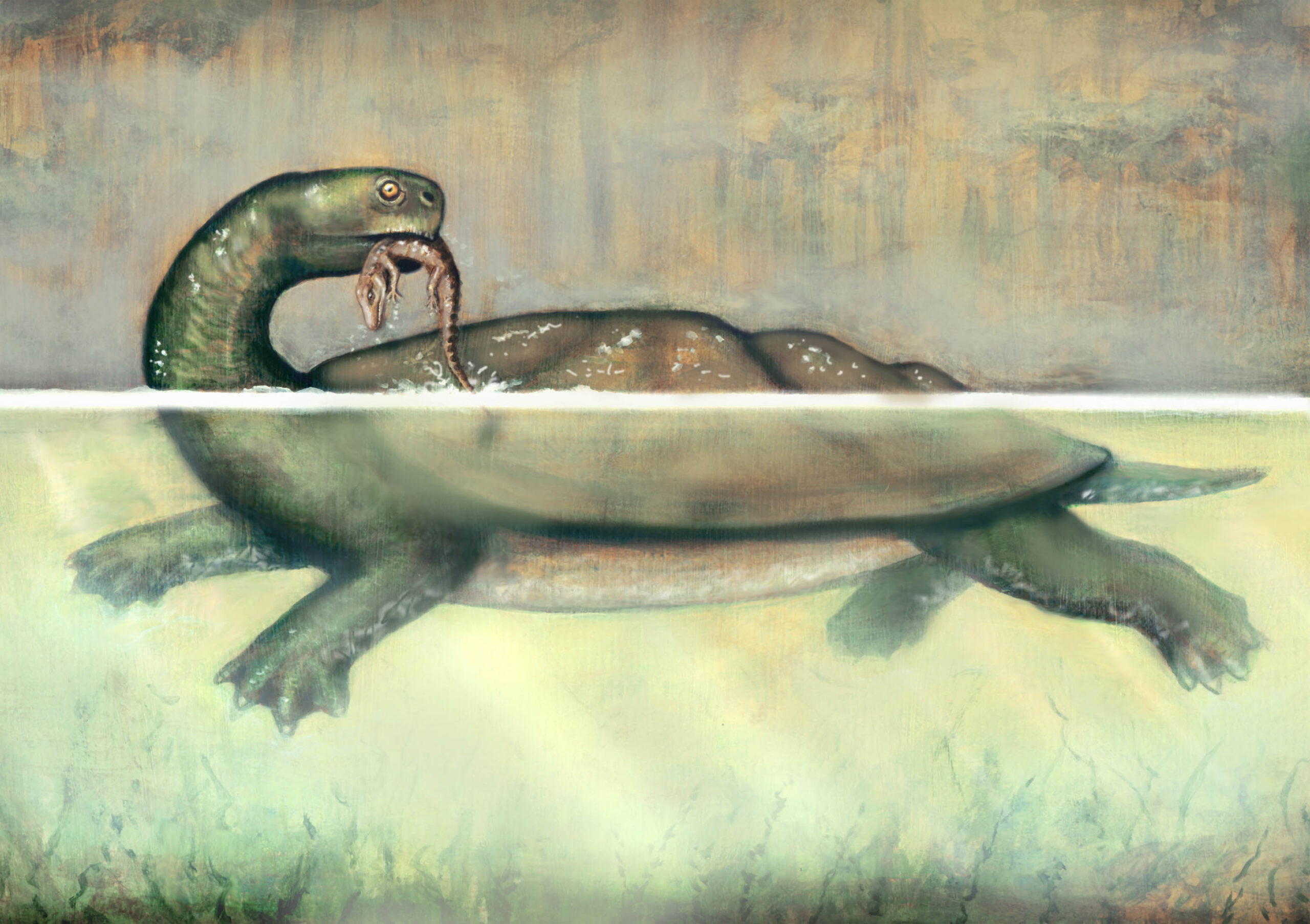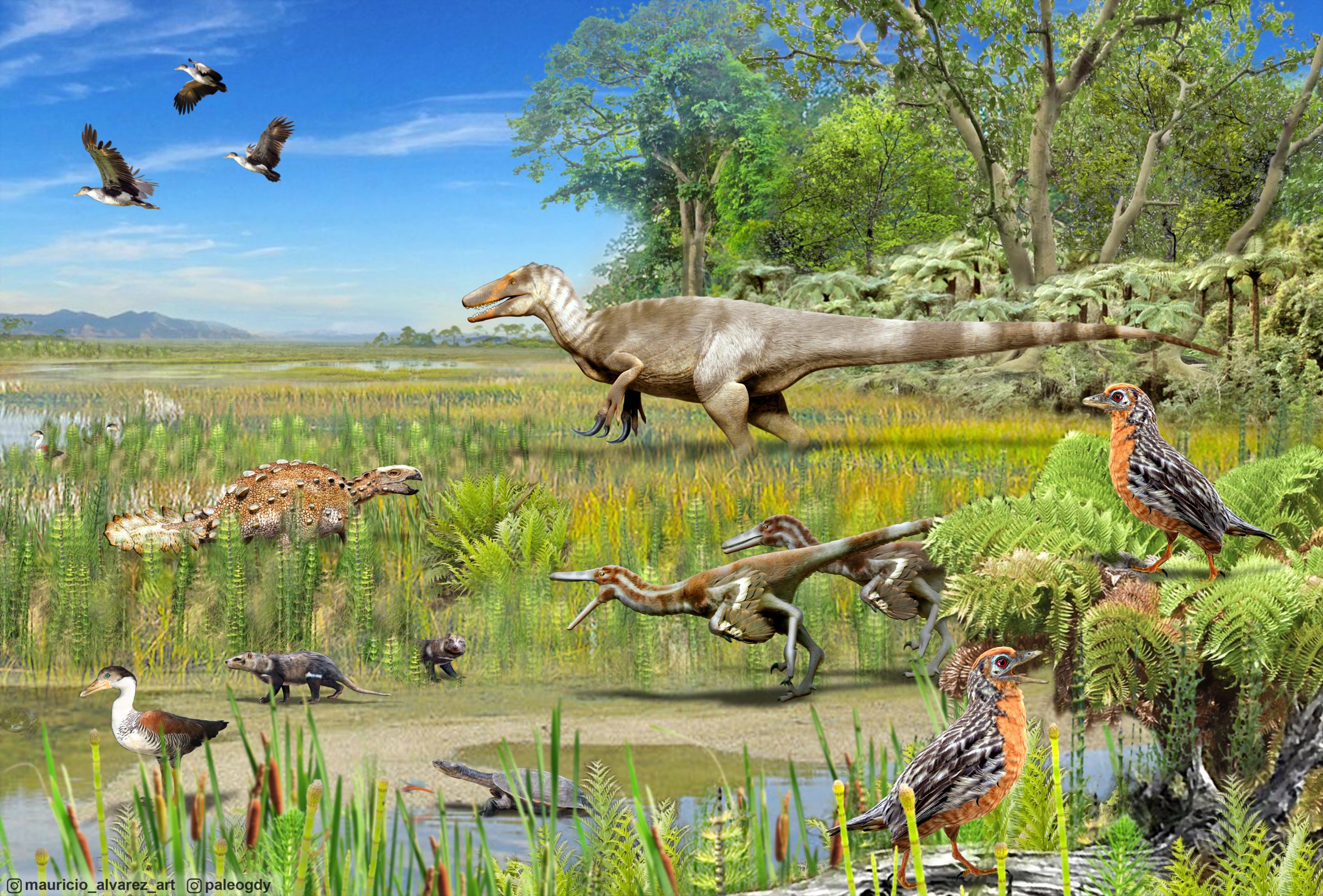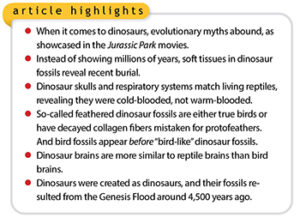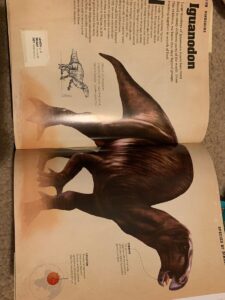Are Dinosaurs Prehistoric? Unveiling Ancient Giants
Yes, dinosaurs are prehistoric, as they lived millions of years ago. Their time period predated recorded history.
Dinosaurs roamed the Earth during the Mesozoic Era, a span that extended from about 252 to 66 million years ago, long before human existence. This era comprises the Triassic, Jurassic, and Cretaceous periods. The fascination with these ancient creatures stems from their size, variety, and the mystery surrounding their extinction.
Discoveries of fossils and dinosaur bones have offered significant insights into their diverse species, habitats, and evolution. Scientists continuously uncover new findings, providing a better understanding of Earth’s geological and biological past. The study of dinosaurs not only captivates the imagination but also plays a crucial role in understanding the history of life on our planet.

Credit: dinonation.com

Setting The Prehistoric Stage
Welcome to the age of giant reptiles roaming the Earth—a time so far from our own it sparks boundless curiosity. ‘Setting the Prehistoric Stage’ transports us back to when dinosaurs ruled the land, seas, and skies. Sit tight, as we journey through geological time scales and explore the epochs that frame the existence of these magnificent creatures.
The Epochs Of Dinosaur Existence
Dinosaurs thrived over vast stretches of time, but not all epochs witnessed their reign.
- Triassic Period – Here begins the dinosaur story, with small ancestors quickly evolving.
- Jurassic Period – The golden age for these giants, boasting incredible growth in size and diversity.
- Cretaceous Period – The final chapter for dinosaurs, featuring the infamous T-Rex and the rise of flowering plants.
Chronology Of The Mesozoic Era
Known as the ‘Age of Reptiles’, the Mesozoic Era hosted three critical periods in dinosaur development.
| Period | Years Ago | Key Events |
|---|---|---|
| Triassic | 252 – 201 million | First dinosaurs appeared. |
| Jurassic | 201 – 145 million | Dinosaurs dominate the landscape. |
| Cretaceous | 145 – 66 million | Large carnivores and herbivores flourish; mass extinction event. |
Unearthing The Giants
The tales of Earth’s ancient behemoths capture imaginations across generations. Dinosaurs, the colossal creatures that once roamed our planet, remain a fascination for many. Unearthing the Giants delves into the discoveries and research that bring these prehistoric giants back to life, piece by remarkable piece. Transitioning from legend to science, these finds shed light on a world millions of years past.
Significant Fossil Discoveries
Dinosaur bones lay hidden for aeons before making their grand debut. Significant fossil discoveries have occurred worldwide, making waves in the scientific community.
- Argentinosaurus: Discovered in Argentina, one of the largest known land animals.
- Tyrannosaurus Rex: Unearthed in North America, a predator that stirs the public’s awe and fear.
- Velociraptor: Found in Mongolia, became widely known thanks to popular culture.
Pioneers In Paleontology
Eager minds have paved the way for dinosaur discovery and understanding. These pioneers in paleontology dedicated their lives to uncovering Earth’s prehistoric secrets.
| Name | Contribution |
|---|---|
| Mary Anning | Uncovered the first complete Plesiosaurus. |
| Richard Owen | Coined the term “dinosaur,” meaning “terrible lizard.” |
| Barnum Brown | Discovered the first partial skeleton of T. rex. |
Anatomy Of The Ancient Behemoths
Dinosaurs, the ancient titans of our planet’s distant past, enthral us with their immense size and power. They roamed Earth millions of years ago, during a time called the Mesozoic Era. Their anatomy has been a subject of fascination and study for scientists across the globe. These prehistoric creatures displayed a variety of forms and features, many adapted uniquely to their environments.
Distinguishing Dinosaur Features
The anatomy of dinosaurs was diverse, giving rise to some of the most iconic creatures in prehistory. Key characteristics help us identify them even after millions of years:
- Bipedal stance: Many dinosaurs walked on two legs, a trait not commonly seen in modern reptiles.
- Hollow bones: Similar to birds, these helped in reducing weight and possibly facilitated flight in some species.
- Serrated teeth: Carnivorous dinosaurs had these for tearing through flesh.
- Armor plates: Some, like Stegosaurus, had bony plates for protection.
Adaptations For Survival
Each dinosaur species had adapted to its ecosystem. These adaptations were crucial for their survival:
| Dinosaur Type | Adaptation | Function |
|---|---|---|
| Herbivores | Flat teeth | Grinding plants |
| Predators | Sharp claws | Hunting prey |
| Large Herbivores | Long necks | Reaching high foliage |
Dinosaur Diversity And Dominance
Dinosaurs roamed the Earth for over 160 million years. With hundreds of species discovered, their diversity and dominance over prehistoric ecosystems is undeniable. From fierce predators to gentle giants, these creatures varied greatly in shape, size, and lifestyle, each uniquely adapted to their environment.
Variety of Dinosaur SpeciesVariety Of Dinosaur Species
Dinosaurs came in many forms. Some were tiny, others massive. Let’s explore the wide range of these ancient animals.
- Theropods: Walked on two legs and had sharp teeth.
- Sauropods: Long-necked and long-tailed giants.
- Ceratopsians: Known for their facial horns and frills.
- Ornithopods: Herbivores that roamed in herds.
- Pterosaurs: Not dinosaurs, but close relatives that could fly.
The Apex Predators And Gentle Giants
In the dinosaur kingdom, size and diet dictated life. Discover the top hunters and peaceful plant-eaters.
| Apex Predators | Gentle Giants |
|---|---|
|
|
The Great Extinction And Modern Legacy
Imagine a world ruled by giants—towering beasts that shook the earth with every step. These kings of the land, the dinosaurs, met an abrupt end some 65 million years ago in an event termed The Great Extinction. Their demise paved the way for mammals and ultimately, humans. This pivotal moment in Earth’s history birthed a legacy that continues to captivate us. From scientific research to blockbuster movies, dinosaurs maintain an enduring presence in modern culture.
Theories Behind The Mass Extinction
Scientists have long debated the cause of the dinosaurs’ disappearance. Numerous theories exist, but a few stand out due to compelling evidence:
- Asteroid Impact: A widely supported theory suggests an asteroid struck Earth, causing immediate and long-term environmental changes.
- Volcanic Activity: Enormous volcanic eruptions could have filled the skies with ash and gases, altering the climate.
- Climate Change: Gradual shifts in climate may have led to unsuitable conditions for dinosaur survival.
Each theory contributes pieces to the puzzle of the dinosaurs’ extinction. The consensus leans towards a combination of factors, with the asteroid impact as the cataclysmic trigger.
Dinosaurs In Popular Culture And Science
Dinosaurs intrigue people of all ages. Blockbusters such as “Jurassic Park” have brought these prehistoric creatures into our cinemas. More than just entertainment, such portrayals inspire future generations of paleontologists and scientists. Museums around the world showcase dinosaur fossils, fueling our fascination and providing insights into these ancient creatures’ lives.
| Dinosaur | Notable Appearance |
|---|---|
| Tyrannosaurus Rex | Jurassic Park Series |
| Velociraptor | Jurassic World Series |
| Brachiosaurus | Walking with Dinosaurs |
In science, the study of dinosaurs or paleontology sheds light on the evolution of life. This research helps us understand the Earth’s past climates, ecosystems, and biological processes. Such knowledge is crucial as we face our own environmental challenges today.
The legacy of dinosaurs extends beyond fossils and films—it influences science, education, and the broader cultural imagination. These magnificent beasts continue to spur curiosity and drive human ingenuity, ensuring their enduring impact on society.

Credit: www.jsg.utexas.edu

Credit: www.npr.org
Frequently Asked Questions Of Are Dinosaurs Prehistoric
Are Dinosaurs Considered Prehistoric?
Yes, dinosaurs are considered prehistoric as they lived millions of years ago before recorded history.
Are Dinosaurs Older Than Cavemen?
Yes, dinosaurs existed millions of years before the appearance of cavemen. Dinosaurs disappeared around 65 million years ago, whereas early humans emerged just a few million years ago.
Who Existed Before Dinosaurs?
Before dinosaurs emerged, amphibians and reptiles called archosaurs dominated the Earth during the Paleozoic Era. These prehistoric ancestors include early reptiles and synapsids.
What Does The Bible Say About Dinosaurs?
The Bible does not explicitly mention dinosaurs. Its texts predate our understanding of dinosaurs, focusing instead on spiritual and moral teachings.
Conclusion
Dinosaurs continue to captivate our imagination with their prehistoric mystery. Clearly, they reigned long before modern history began. Their fossilized remains offer a glimpse into Earth’s distant past. Embracing these ancient giants enriches our understanding of life’s evolution. Let’s keep exploring the depths of time they once roamed.





